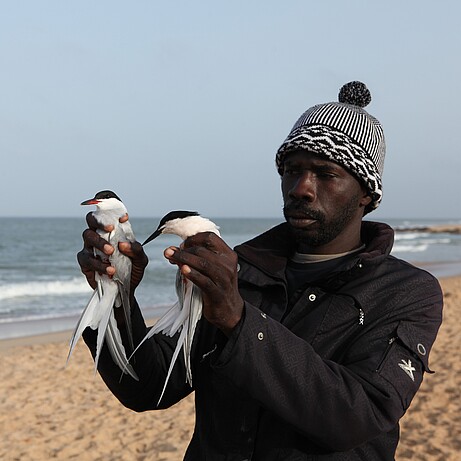

Beyond borders – visiting terns during their spring migration
In 2021, we received an email from a group of Belgian ringers that had retrieved a geolocator that we had attached to a Banter See common tern as part of our project on the causes and consequences of variation in the migratory phenotype of these birds. The retrieval took place at La Somone in Senegal, and it turned out that this group of Belgian ringers spent two weeks a year trapping terns during spring migration, and had done so since 2000. In 2022, we joined them to find out which sort of sampling might be possible, a lucky coincidence, because in 2023 such sampling became highly relevant after terns along the East Atlantic Flyway had been affected by highly pathogenic avian influenza H5N1. In addition to sampling feathers and dried blood spots on FTA cards for molecular sexing (Monticelli et al. 2025), mercury contamination and isotope analysis, we therefore collected swab samples to assess whether any of the migrating birds showed signs of active influenza infections, and plasma samples to study antibodies against influenza. Due to the difficulty of transporting samples that need to stay frozen, we, in 2024, changed our sampling approach to, besides collecting feathers and dried blood spots, assess influenza infections with the help of rapid tests.
Publications
Monticelli D, Defourny H, Degros E, Portier B, Cerveira LR, Ramos JA, Paiva VH, Berthelsen UM, Bregnballe T, van der Winden J, Bouwhuis S*, Szczys P* (2025) Sex identification based on biometrics in four long-distance migratory tern species mist-netted along the East Atlantic Flyway. Journal of Ornithology 166: 577-588 (*shared senior authorship)

